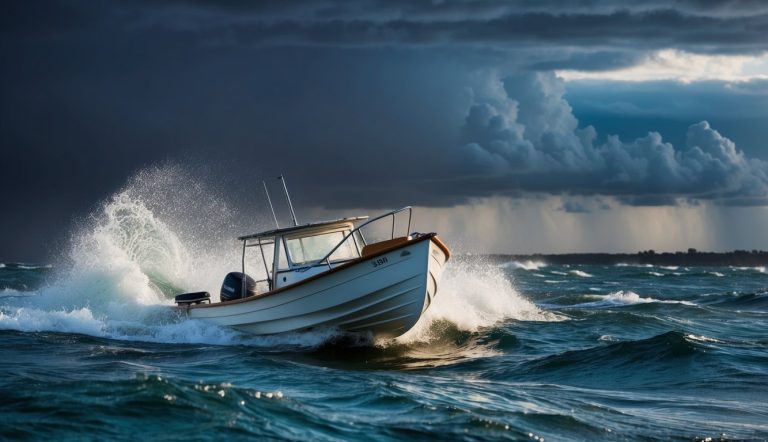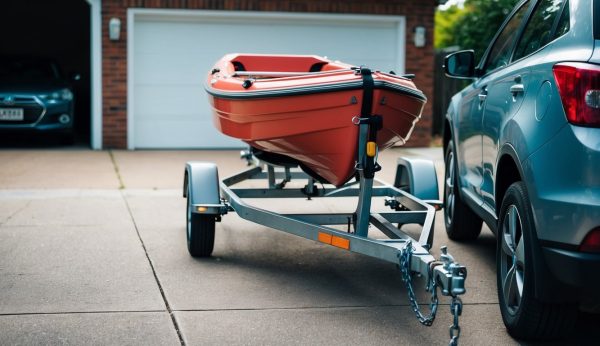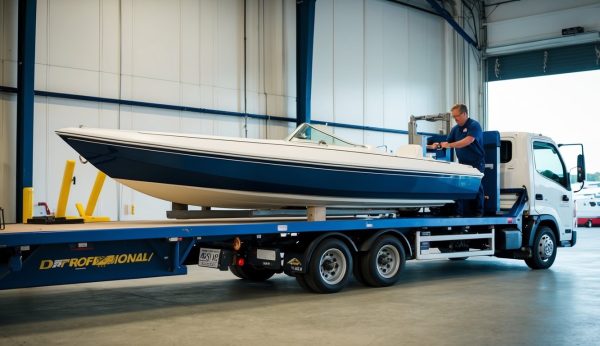The Impact of Weather Conditions on Dinghy Safety
Weather presents significant challenges when transporting dinghies. Different conditions can affect safety in various ways that require specific precautions and awareness.
Visibility Challenges and Safe Operations
Poor visibility is one of the most dangerous weather-related issues when transporting dinghies. Fog and heavy rain can drastically reduce your ability to see other boats, navigation markers, and potential hazards. During foggy conditions, you should reduce your speed and use navigation lights even during daylight hours. Rain and fog significantly reduce visibility, making it crucial to maintain awareness of your surroundings.
Consider these visibility safety measures:
- Use GPS and radar systems when available
- Keep a proper lookout at all times
- Maintain communication with nearby vessels
- Postpone travel in extremely low visibility conditions
Weather apps and marine forecasts can help you plan around poor visibility conditions. Never rush when operating in reduced visibility—your safety depends on cautious decision-making.
Effects of High Winds and Waves on Stability
High winds pose serious risks to dinghy stability during transport. Strong gusts can affect your control over the vessel and increase the chances of capsizing. When facing challenging wind conditions, head into the waves at a slight angle and reduce your speed. This approach helps maintain stability and prevents waves from hitting your dinghy broadside.
Wind effects to be aware of:
- Crosswinds can push your dinghy sideways
- Headwinds increase fuel consumption
- Tailwinds can cause steering difficulty
Strong winds can capsize boats, either directly or combined with large waves. Pay attention to wind direction changes, especially near land features that can create unexpected gusts. Always secure loose items that could shift in high winds. This prevents weight distribution problems that might compromise stability.
Precipitation and Flooding Risks
Heavy rainfall creates multiple safety concerns during dinghy transport. Excessive water can accumulate in your dinghy, affecting stability and potentially damaging equipment. You should always have proper drainage systems and check them before departure. Bailing equipment should be easily accessible in case you need to remove water quickly.
Flood risks include:
- Submerged obstacles becoming invisible
- Increased current strength
- Debris in the water
- Difficulty docking or launching
While traveling through turbulent weather, visibility decreases and road surfaces become slick if you’re trailering your dinghy. Allow extra stopping distance due to the additional weight of a trailer. Check weather forecasts regularly before and during your journey. Having waterproof covers and securing sensitive equipment protects against water damage from unexpected precipitation.
Securing Dinghies in Rough Conditions
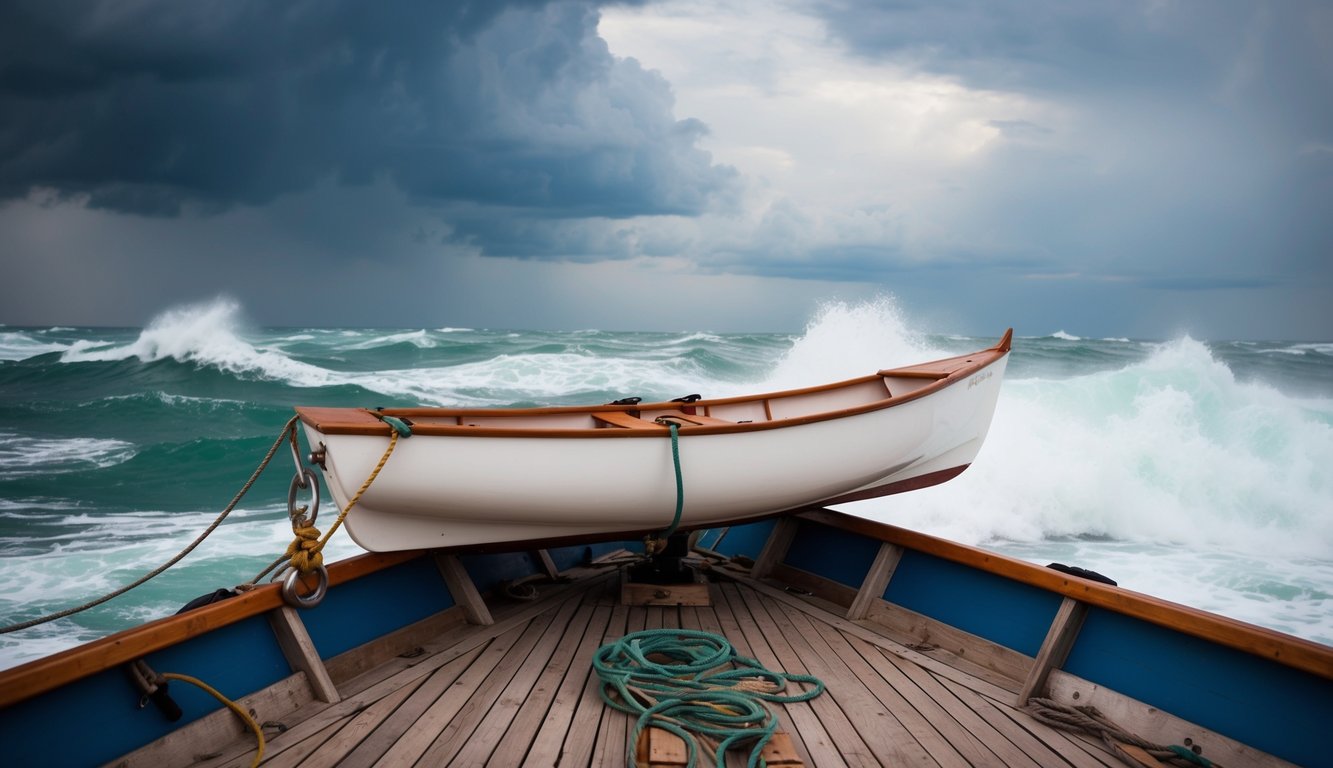
Proper securing techniques for dinghies during transport in rough weather conditions help prevent damage and ensure safety. The right infrastructure, effective casting methods, and awareness of environmental concerns all play important roles in successful dinghy transport.
Infrastructure and Security Measures
Strong attachment points are essential when securing your dinghy in turbulent weather. Use marine-grade hardware that can withstand high winds and rough seas to prevent detachment. For moored vessels, consider relocating your dinghy to the midship section during storms. This positioning reduces strain on tow lines and minimizes bouncing in choppy waters.
Essential security hardware includes:
- Marine-grade carabiners
- Reinforced D-rings
- Weather-resistant straps (at least 2 inches wide)
- Chafe guards for all connection points
During transport on trailers, use at least three securing straps—one at the bow and two crossing the stern. Check all connection points before departure and periodically during your journey, especially when road conditions deteriorate.
Effective Practices for Dinghy Casting
When casting off or retrieving your dinghy in rough conditions, maintain constant tension on the lines. This prevents sudden jerks that could damage attachment points or the vessel itself. Position yourself with your body weight centered and knees slightly bent to absorb shock from unexpected waves. Always wear appropriate footwear with non-slip soles.
For towing behind larger vessels, use a bridle system rather than a single line. This distributes force evenly and reduces the risk of capsizing in turbulent waters.
Towing distance recommendations:
| Water Conditions | Recommended Towing Distance |
|---|---|
| Calm | 15-20 feet |
| Moderate | 25-30 feet |
| Rough | 35-40 feet |
Adjust your boat speed when towing through rough water. Slower speeds allow for better control and reduce strain on both vessels.
Preventing Invasive Species Transfer During Transportation
Thoroughly inspect your dinghy before and after transport between different bodies of water. Small aquatic organisms can hide in crevices and be transported unknowingly.
Clean all surfaces with fresh water and allow complete drying time between uses in different locations. Pay special attention to:
- Hull seams and joints
- Propeller assemblies
- Storage compartments
- Anchor wells and line storage
Consider using a preventative solution of 5% bleach in problem areas where organisms might attach. Rinse thoroughly afterward to prevent damage to your dinghy materials. When securing your dinghy during storms, remove any vegetation or debris that could contain invasive species. This dual-purpose action prevents both biological contamination and potential line tangles.
Understanding Oceanographic Metrics for Safe Dinghy Transport
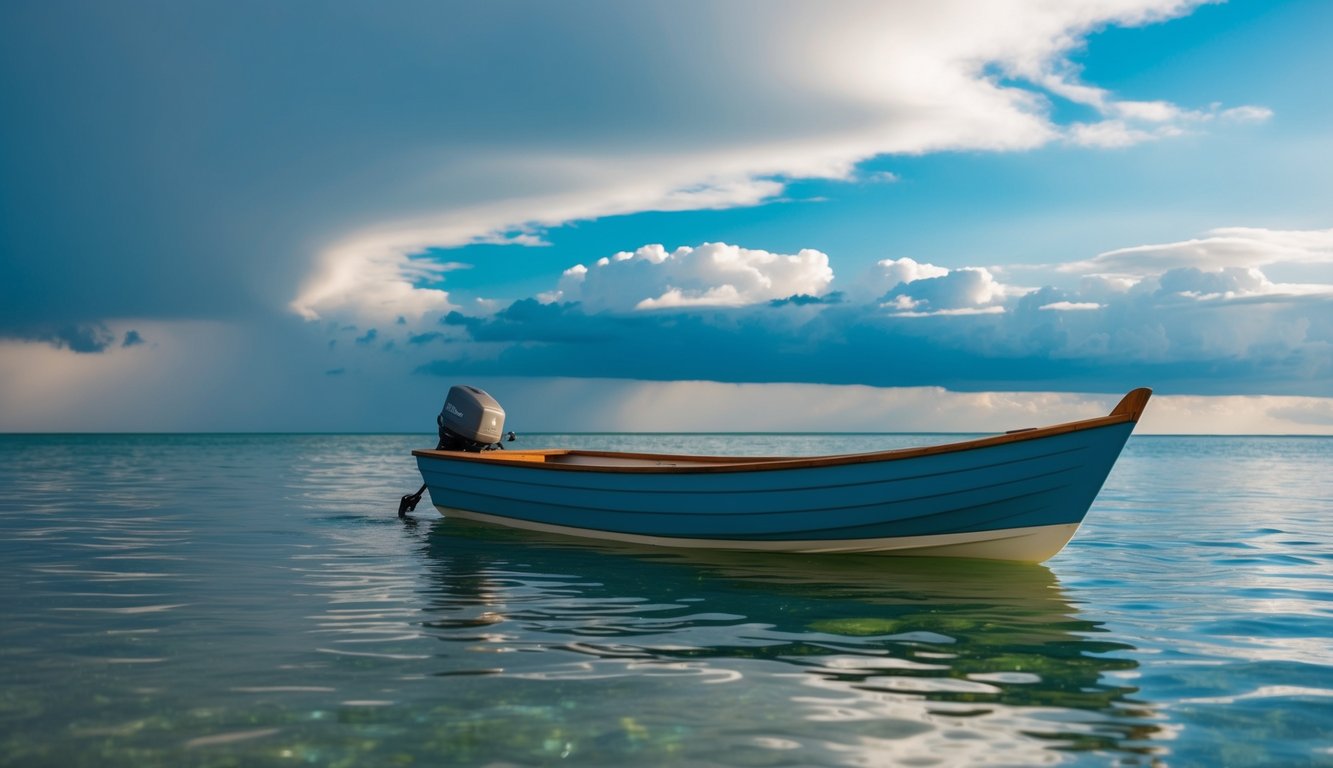
Navigating a dinghy requires understanding key oceanographic measurements to ensure safe passage. Weather and water conditions directly affect small vessel stability and maneuverability in ways that larger boats might easily handle.
Wave Height and Wind Speed Considerations
- Wave height is one of the most critical measurements for dinghy operators. Waves over 2 feet (0.6 meters) can significantly challenge smaller dinghies, making them difficult to control and increasing capsizing risk.
- When planning your journey, check local marine forecasts for wave height predictions. Remember that even moderate waves can become dangerous when they come at irregular intervals or from multiple directions.
- Wind speed directly influences wave formation and should be carefully monitored. Most recreational dinghies operate safely in winds below 15 knots. Winds exceeding this threshold create challenging conditions that affect your dinghy’s handling.
- The relationship between wind and waves isn’t always straightforward. A half-knot current can impact your small vessel more than stronger winds due to water’s greater density compared to air.
Analyses of Long-Term Weather Patterns
Understanding weather patterns helps you make better decisions about dinghy transport. Seasonal changes affect water conditions predictably, with spring often bringing unstable weather and summer offering calmer seas in many regions. Pay attention to how weather systems interact with coastal areas. When systems meet, they can enhance water transport and create unexpected conditions that might challenge your dinghy navigation.
Review historical weather data for your area to identify:
- Typical wind patterns by season
- Common storm tracks
- High-risk weather periods
- Seasonal precipitation impacts
Weather-related issues such as high water or low water periods can dramatically affect your ability to navigate safely. Monitoring these patterns helps you avoid dangerous conditions and plan your dinghy transport more effectively.
